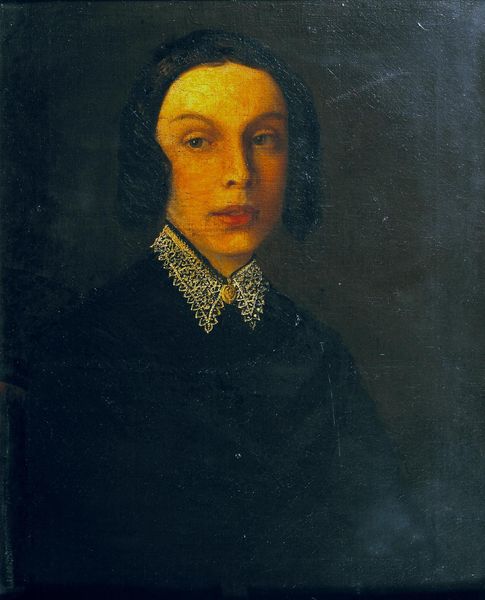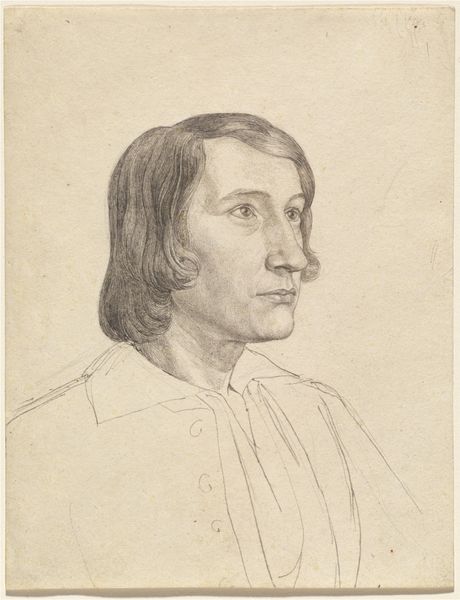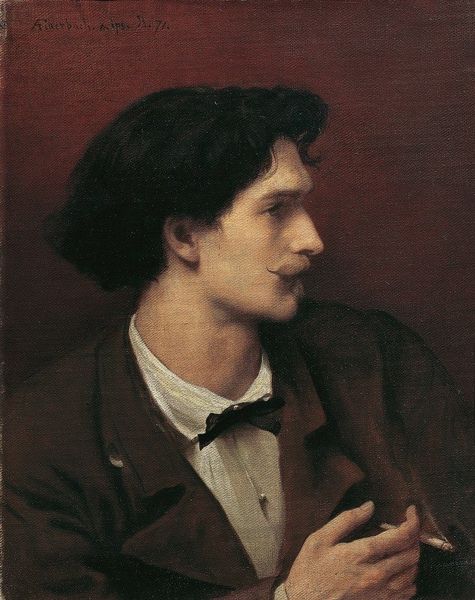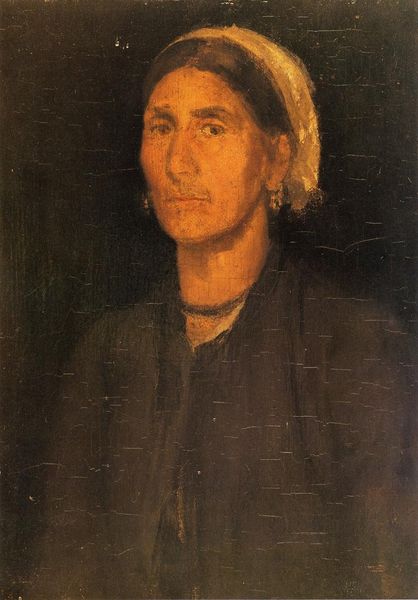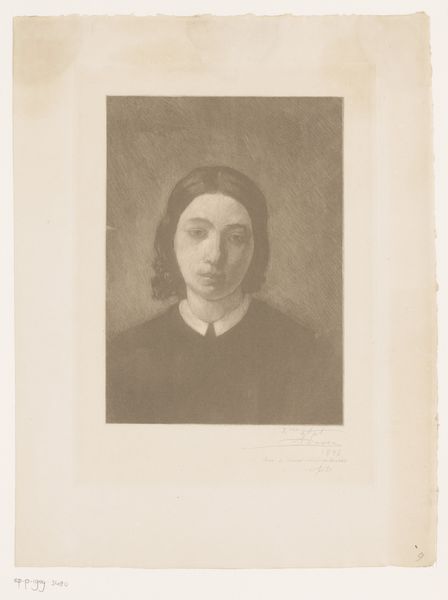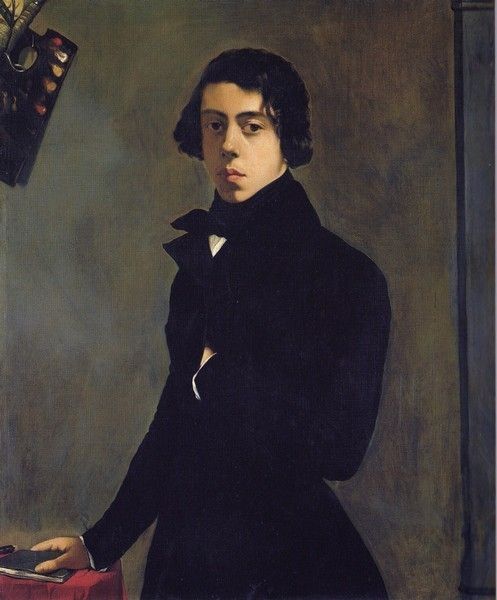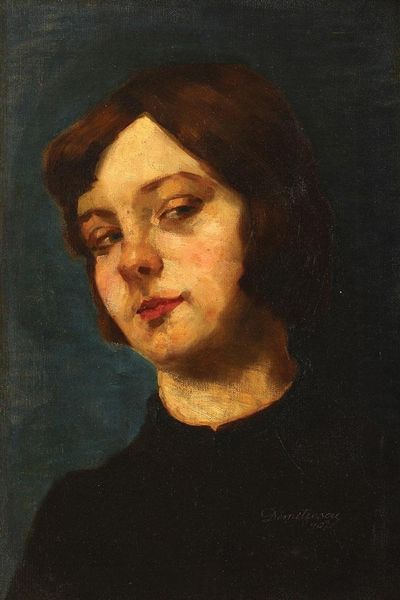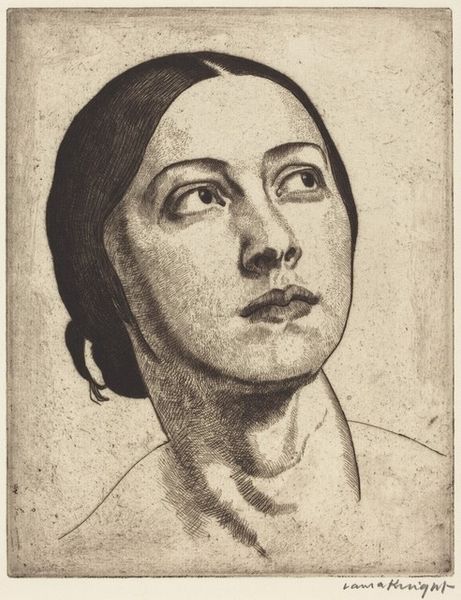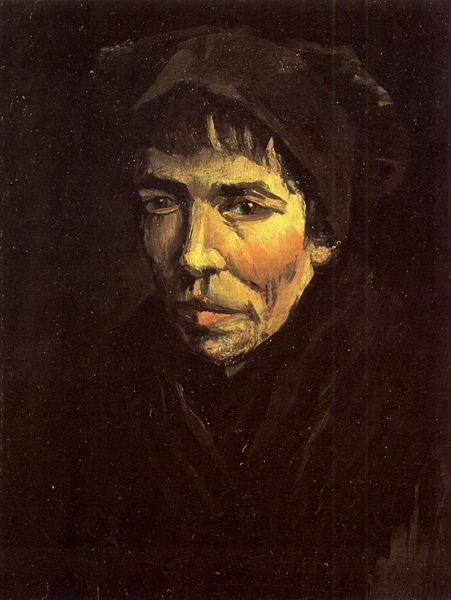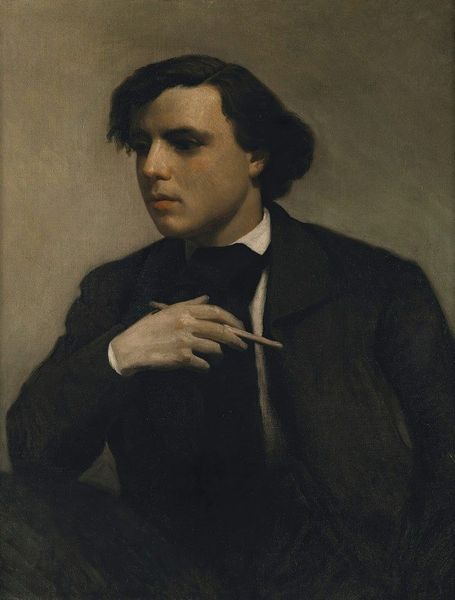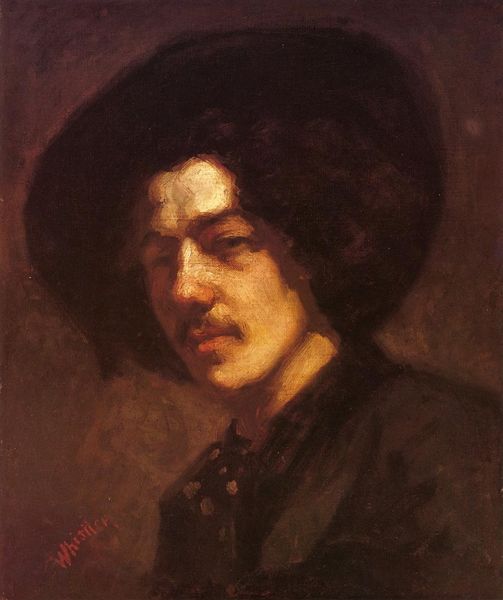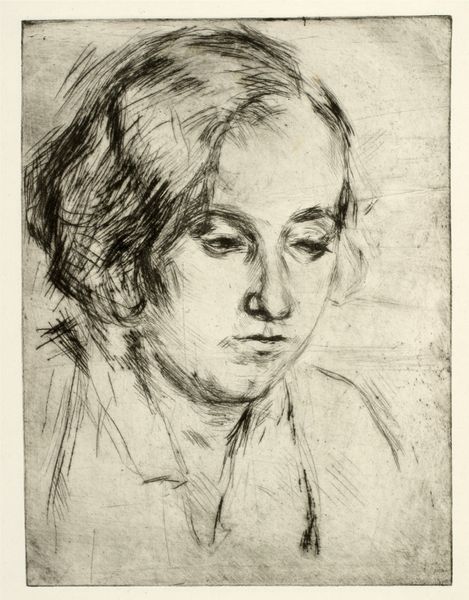
painting, oil-paint
#
portrait
#
painting
#
oil-paint
#
intimism
#
romanticism
#
academic-art
Copyright: Public Domain: Artvee
Curator: The quietude here is remarkable. There's such stillness in this 1846 oil on canvas, “Portrait of Alexander Michelis,” by Arnold Böcklin. His eyes are closed, head tilted downwards, giving a strong sense of introspection. Editor: It feels incredibly staged, though. You've got Böcklin positioning his subject in this very studied, romanticized pose. It looks almost too perfect. Were portrait commissions like this purely about idealized representations, or did material concerns play a role in the composition? Curator: There's definitely the pressure for portraiture at this time to flatter, or at least convey respectability, in line with academic art conventions. But it's also about asserting the status of the sitter within the social fabric, especially as photography started to become more commonplace. Editor: That's what I'm getting at! The rise of photography forced painters to justify the value of their labor. A portrait became not just a likeness but a display of skill, of material investment—time, costly pigments, expensive canvas. Was Böcklin making a statement about the value of handmade art in a machine age? The labor! Curator: Perhaps. Considering the socio-political context of 1846, this could be seen as an attempt to imbue his sitter, Alexander Michelis, with a particular sense of dignity. Böcklin positions his subject with an undeniable air of seriousness, even pensiveness, at a time where Romanticism as a cultural force was very powerful in establishing an image of the artist and the intellectual. Editor: That dark coat and carefully arranged collar speak to it too, don’t they? It’s an interesting study in texture—the rough weave of the cloth in opposition to the almost porcelain-like smoothness of Michelis' skin. I wonder if Böcklin used particular grounds or varnishes to achieve that contrast. Curator: A crucial aspect often missed. How artists employed specific materials significantly impacted how their work was perceived and what societal roles it played. Thanks for calling out those material components. Editor: Of course. Considering these details gives us an understanding of the historical and the production context, making such works more accessible, more meaningful.
Comments
No comments
Be the first to comment and join the conversation on the ultimate creative platform.
